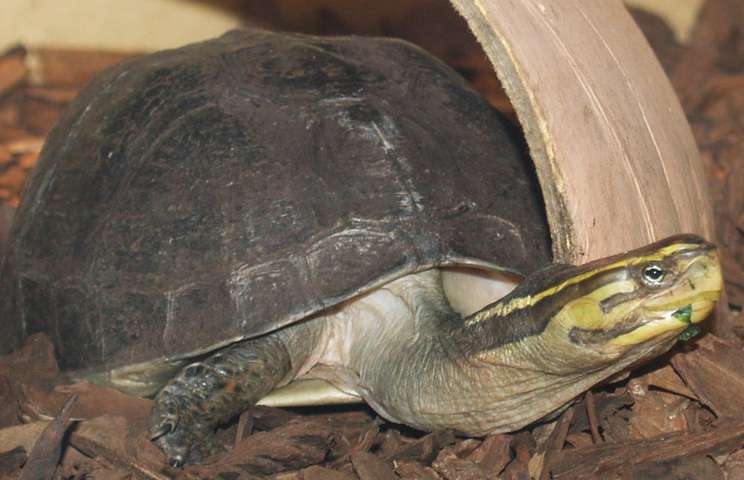
One of the Map turtle subspecies that is most widely distributed in the Central and Eastern United States is the Northern Map turtle. They mostly live in river systems and hardly ever leave the water. Although they occasionally consume vegetation, these turtles primarily eat fish and other water invertebrates like crayfish.
Care as a Pet

Housing
The fully aquatic northern map turtle spends a lot of time in the water. They mostly live in bigger bodies of water like lakes, ponds, and rivers. These turtles love to soak in the sun, and they will often use rocks or logs that protrude from the water as platforms. They can be wary and will hide in deeper water if they feel threatened. Native to North America, northern map turtles. Along the Great Lakes region, they can be found in the central and eastern parts of the United States. These turtles can also be found in southern Canada, close to Ontario and Quebec.
Heat
Any turtle’s health depends on having the proper temperatures in the tank. The use of thermometers to record the various temperatures should become standard procedure. Northern Map turtles require water that is between 72 and 75 degrees Fahrenheit (22 and 24 degrees Celsius). You should utilize a submersible water heater to keep the water warm enough if your home can’t naturally maintain this temperature range. The enclosure’s ambient temperature should be between 75 and 80 degrees Fahrenheit (24 and 27 degrees Celsius), and the basking temperature should be kept between 85 and 100 degrees Fahrenheit (29 and 37 degrees Celsius).
Feed
As part of a more carnivorous diet, Northern Map turtles in the wild primarily consume crabs, insects, and mollusks. In order to receive some nutrients, they will also occasionally eat a small amount of vegetation. You can easily mimic this diet while keeping a Northern Map turtle in captivity by feeding it common items like crickets, prawns, dubia roaches, and other insects. Mollusks including earthworms, canned snails, and cockles are more options. However, it might be harmful to a Northern Map turtle’s health to feed them a wholly carnivorous diet. Health issues may result from eating too much protein and not enough other nutrients from vegetables or pellets. A balanced diet should be offered, as should sporadic offerings of plants like duckweed. Commercial turtle diets like ReptoMin and Mazuri are also effective. These also include essential elements that are challenging to provide to aquatic turtles through powdered supplements, such as calcium and Vitamin D3. Make up the majority of your Northern Map turtle’s diet with these.
Table





